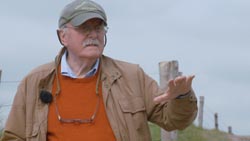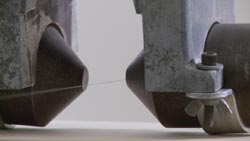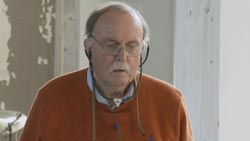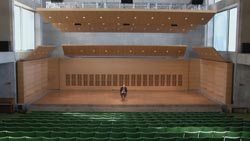| Sferics (1981) “...if you put an antenna and a receiver, then you can hear them, they are very beautiful. That is all I have done, that is to make it available to people to hear. Very simple.” 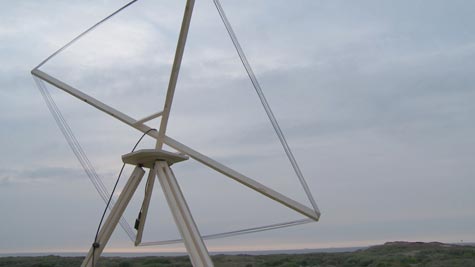 SFERICS is a unique work in Lucier’s œuvre in that it is simply a recording. However, it is not a recording of sound waves but of radio waves. These radio waves, called “sferics” (short for atmospherics), are natural radiofrequency emissions resulting from lightning in the ionosphere. Part of these emissions fall into the spectral range of hearing, thus they do not have to be transformed into the audible region once they have been detected using special antennas and receivers.
Together with Pauline Oliveros, Lucier made attempts to record sferics already at the end of the sixties. But these early attempts were not very successful. In 1981, he made another attempt in Colorado with better equipment. This time he made a recording that was finally published by Lovely Music.
There are different kinds of sferics, often named according to the sounds they produce: tweeks, bonks, pops, whistlers etc. Two types are especially easy to detect: those creating very short sounds that are constantly heard as crackling and others creating pops. Both types can be heard in all the recordings of the film and they are the only sferics audible in the first track recorded in the dunes of The Hague. In the short excerpt of the Colorado recording, in addition longer, musical sounds resulting from an echoing between Earth and ionosphere can be heard and a “whistler” , producing a significantly longer, descending sound (the high frequency sounds in this recording result from a navigation system). For the night image, we chose a recording in which you can hear an even rarer type called “dawn chorus” which sounds similar to a chirping swarm of birds. | | THE FILM 
DESCRIPTION OF PIECES 
NEXT 
OVERVIEW 
DIRECTORS 
ALVIN LUCIER 
TRAILER 
CREDITS 
NEWS 
CONTACT 
| |
